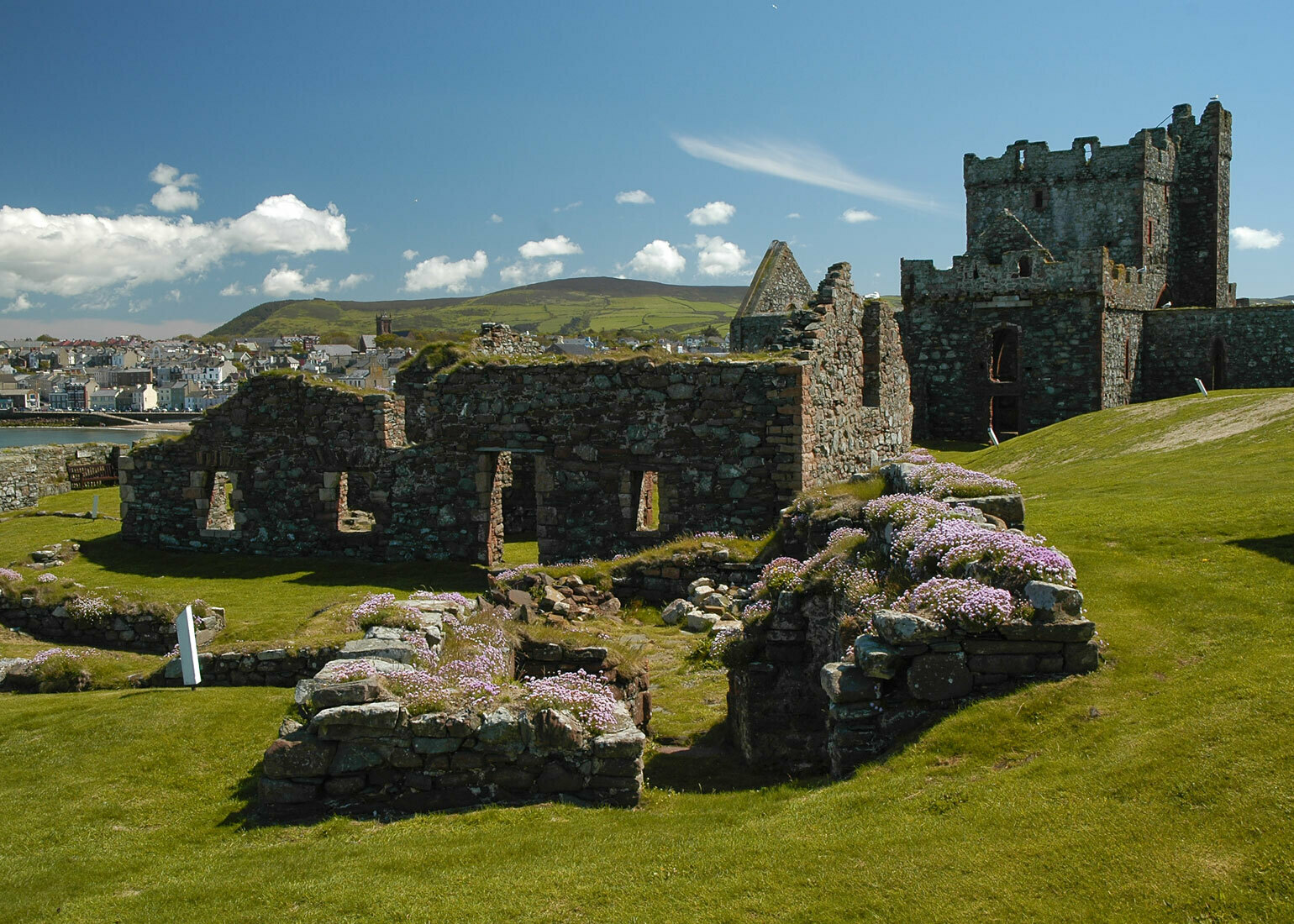About
Site Directory
Copyright © 2025 www.isleofman.com
All Right Reserved
powered by 
Copyright © 2025 www.isleofman.com
All Right Reserved
powered by 


St Patrick's Isle, home to Peel Castle, is linked to the Isle of Man by a causeway
Written by Charles Guard
St Patrick's Isle is one of the smallest islands in the Irish Sea and yet one of the most historic, with an extraordinary history stretching back over eight thousand years.
It has been the home of princesses and bishops, monks and Vikings, peasants and fisherman.
The story begins some six thousand years before Christ when hunter gatherers made their way here, attracted by the abundant fish, and the fresh water of the nearby river.
By the time of the Dark Ages and the unrest throughout Europe, the isolation of St Patrick's Isle made it an ideal place for safety, for storing grain in times of siege, and for establishing the King's court.
It was here, tradition tells us, that St Patrick stepped ashore to bring Christianity to the Isle of Man, and a monastery and early churches were established.
This wealth attracted the Vikings who had started to plunder the Irish Sea coasts by the 10th century, and by the 11th century they had built a fort on the Island under the intriguingly named King Magnus Barelegs.
After the Viking period, the Isle of Man was fought over by the Scottish and English powers, and eventually it came under English rule at the beginning of the 14th century, and was gifted to a certain Sir John Stanley by King Henry IV. From this time on, St Patrick's Isle was used both by the Church and the Lords of Mann, though not without frequent arguments as to who was really in control.
Eventually the castle was abandoned in the 18th century when the garrison was moved out to one of the other island towns. Soon afterwards the lead was stripped from the Cathedral roof, and the stained glass removed. Gradually, the buildings deteriorated until today, all we see is a picturesque ruin, albeit on a dramatic sea swept location. The soft pink sandstone has been scoured by centuries of wind racing in off the Irish Sea, and the pillars and arches of the buildings are weathered into strange shapes.
Nowadays, instead of the singing of monks or the shouting of soldiers, it is the constant arguing of seagulls that fills the air, along with the endless sound of the sea, over which so much richness and tragedy has come to this tiny island over so many thousands of years.